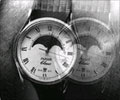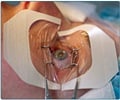Diagnosis
An electro-oculogram (EOG) is abnormal in all cases of Best disease.
Diagnosis: A number of tests conducted on the eye help in the diagnosis of Best disease. These are:
Electro-oculogram: The electro-oculogram is a test that detects any abnormalities in the function of the retinal pigment layer. An electro-oculogram is abnormal in Best disease even if the vision is normal.
Electroretinogram tests: Electroretinogram tests, which test for macular function, may be abnormal in cases of Best disease.
Fluorescein angiogram: A fluorescein angiogram is a test which studies the blood vessels of the eye. In this procedure, a dye is injected into a vein. With the help of a special camera, the movement of the dye in the blood vessels of the eye can be studied. A fluorescein angiogram reveals abnormalities in blood flow in the macula in patients with Best’s disease.
Fundus photography: The fundus is the inner part of the eye opposite the lens and includes the macula. Fundus photography is used to check for deterioration of the disease.
Optical coherence tomography: Optical coherence tomography, a new non-invasive technique, is also used to identify abnormalities in the eye.
Genetic testing: Since the disease is genetic in origin, testing for genetic defects could help to confirm the diagnosis. Genetic testing can also be carried out in family members to identify the affected people early and to counsel them as necessary.








